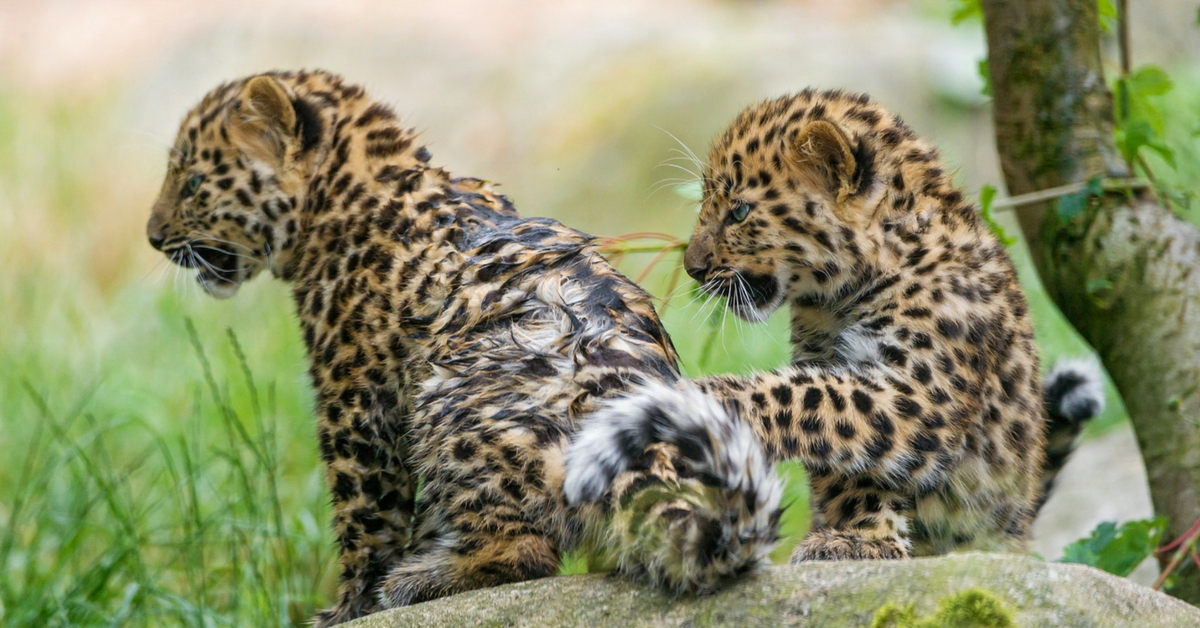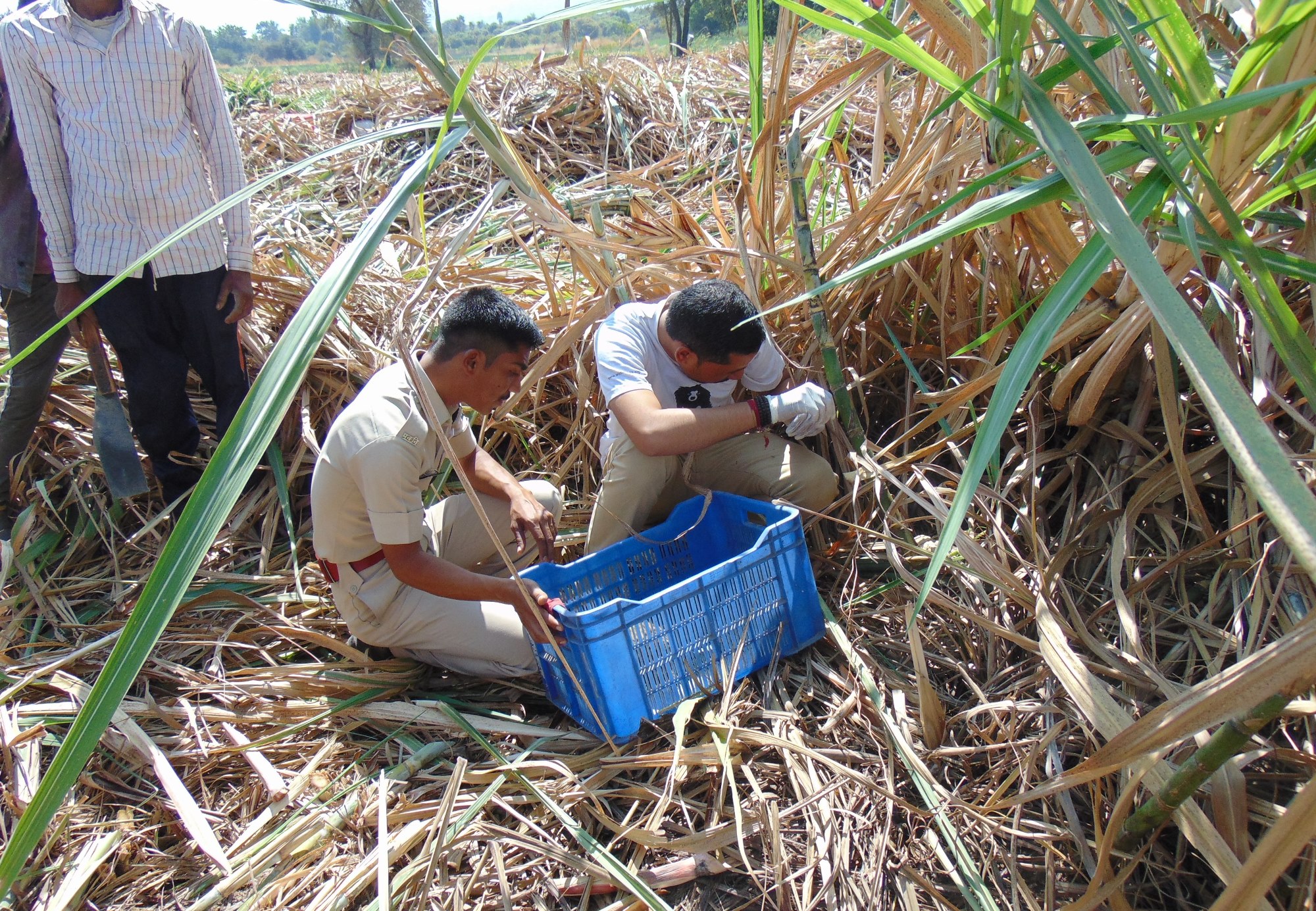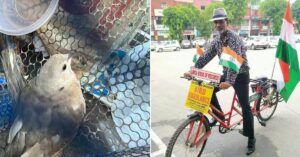TBI Blogs: Found in a Sugarcane Field Near Pune, These Baby Leopard Cubs Had a Happy Family Reunion
In recent years, rapid infringement of human settlements and expansion of agriculturally-used land has forced Maharashtra’s leopards to adapt to the changing landscape. Wildlife SOS recently rescued a pair of three-week-old leopard cubs who were happily reunited with their mother near Pune.

In recent years, rapid infringement of human settlements and expansion of agriculturally-used land has forced Maharashtra’s leopards to adapt to the changing landscape. Wildlife SOS recently rescued a pair of three-week-old leopard cubs who were happily reunited with their mother near Pune.
As dawn broke over Somatwadi village, located a few kilometres away from the bustling city of Pune, seasonal farmers woke up to another busy day of harvesting their sugarcane crops. Around the same time, a mother leopard decided to venture out to the neighbouring forest to hunt, leaving her young offspring hidden safely amidst the tall dense thickets. With little forest cover left for foraging, hiding, and to live in, female leopards find the tall dense, sugarcane fields a suitable shelter for giving birth and rearing their cubs.
However, it wasn’t long before the two baby leopards were discovered by the farmers. Barely able to open their eyes as they sat huddled together, the cubs were helplessly mewling for their mother. Worried that they would incur the wrath of the mother leopard if they attempted to move them away from the field, the farmers contacted the Forest Department and wildlife rescue and rehabilitation NGO Wildlife SOS to intervene, so that this would not escalate into a human-wildlife conflict situation.
The harvest season from December to March witnesses higher instances of leopard sightings and conflict situations, because the farmers move into the fields to cut down the long sugarcane stalks.
Such problems are faced quite frequently by villagers residing near the scrub forests of Maharashtra, which is the natural habitat of a large population of leopards.

The Wildlife SOS team operating out of the Leopard Rescue Center in Junnar responded immediately by dispatching a rapid rescue team to the location. Forest department personnel Mr. Sanjay Gaikwad also reached the location, along with the NGO’s senior veterinarian Dr. Ajay Deshmukh.
The two leopard cubs, identified as a male and a female, were estimated to be about 21 days old. They were scared and yearning for their mother’s presence. After conducting a meticulous veterinary clinical examination for parasites and injuries, the officials found the cubs in good health and fit for release.
The challenge now was to reunite these helpless cubs back with their aggrieved mother, who was reportedly lurking around the village in search of her missing cubs. The team carefully placed the two cubs in a safe box and placed this in the field where they last saw the leopard.
They placed two remote-controlled camera traps to document the reunion process, while monitoring the area from a distance.

Over the years, the organisation has successfully reunited over 40 lost, injured, or separated leopard cubs. However, this was Wildlife SOS and the Forest Department’s first rescue operation on-tape.
After a long wait, the female leopard called for the cubs. Cautiously emerging from the forest, she slowly walked to the safe box from which she could hear her cubs mewling. Removing the cover of the box in a swift motion, she checked her cubs by caressing each with her muzzle.
Carefully carrying them by the scruff of the neck, she slowly vanished into the forest.

Wildlife SOS makes every effort to make such rescue and reunion operations possible. It is crucial for leopard cubs to grow up with their mothers. They learn survival skills such as stalking, hunting, and locating their prey from their mothers in their first 18 months. The organisation likes to ensure that these leopards don’t end up in captivity. These animals get a chance to return to the wild, where they can live freely in their natural habitat.
Find out how you can contribute to helping Wildlife SOS save India’s wildlife on the website.
The featured image is for representation purpose only. (Source: Flickr)
Like this story? Or have something to share? Write to us: [email protected], or connect with us on Facebook and Twitter.
NEW: Click here to get positive news on WhatsApp!
If you found our stories insightful, informative, or even just enjoyable, we invite you to consider making a voluntary payment to support the work we do at The Better India. Your contribution helps us continue producing quality content that educates, inspires, and drives positive change.
Choose one of the payment options below for your contribution-
By paying for the stories you value, you directly contribute to sustaining our efforts focused on making a difference in the world. Together, let's ensure that impactful stories continue to be told and shared, enriching lives and communities alike.
Thank you for your support. Here are some frequently asked questions you might find helpful to know why you are contributing?


This story made me
-
97
-
121
-
89
-
167














